
Mitte is the first and most central borough of Berlin. The borough consists of six sub-entities: Mitte proper, Gesundbrunnen, Hansaviertel, Moabit, Tiergarten and Wedding.

Charlottenburg-Wilmersdorf is the fourth borough of Berlin, formed in an administrative reform with effect from 1 January 2001, by merging the former boroughs of Charlottenburg and Wilmersdorf.

Tiergarten is a locality within the borough of Mitte, in central Berlin (Germany). Notable for the great and homonymous urban park, before German reunification, it was a part of West Berlin. Until Berlin's 2001 administrative reform, Tiergarten was also the name of a borough (Bezirk), consisting of the current locality (Ortsteil) of Tiergarten plus Hansaviertel and Moabit. A new system of road and rail tunnels runs under the park towards Berlin's main station in nearby Moabit.

Theory of Colours is a book by Johann Wolfgang von Goethe about the poet's views on the nature of colours and how they are perceived by humans. It was published in German in 1810 and in English in 1840. The book contains detailed descriptions of phenomena such as coloured shadows, refraction, and chromatic aberration. The book is a successor to two short essays titled "Contributions to Optics".
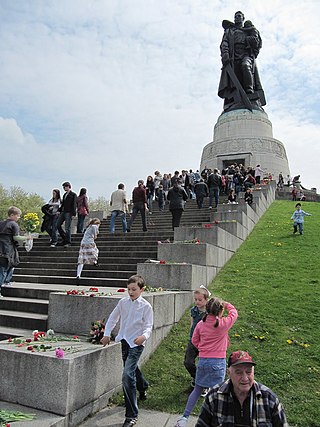
The Soviet War Memorial is a war memorial and military cemetery in Berlin's Treptower Park. It was built to the design of the Soviet architect Yakov Belopolsky to commemorate 7,000 of the 80,000 Red Army soldiers who fell in the Battle of Berlin in April–May 1945. It opened four years after the end of World War II in Europe, on 8 May 1949. The Memorial served as the central war memorial of East Germany.

The Soviet War Memorial is one of several war memorials in Berlin, the capital city of Germany, erected by the Soviet Union to commemorate its war dead, particularly the 80,000 soldiers of the Soviet Armed Forces who died during the Battle of Berlin in April and May 1945.

The German Resistance Memorial Center is a memorial and museum in Berlin, capital of Germany.

Berlin Tiergarten is a railway station on the Berlin Stadtbahn line in the Tiergarten district of Berlin. It lies between the stations of Zoologischer Garten and Bellevue on the Straße des 17. Juni in the Hansaviertel locality of the Mitte borough. It opened in 1885 and is served by the S-Bahn lines S3, S5, S7 and S9 and located very close to the Großer Tiergarten park. The station is part of the Stadtbahn viaduct and has heritage listing.

The Soviet War Memorial in Schönholzer Heide in Pankow, Berlin was erected between May 1947 and November 1949, and covers an area of 30,000 square metres. The memorial contains the largest Soviet cemetery in Berlin, which is also the largest Russian cemetery in Europe outside of Russia.
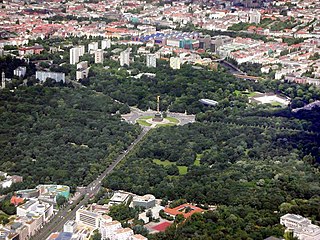
The Tiergarten, formal German name: Großer Tiergarten ) is Berlin’s most popular inner-city park, located completely in the district of the same name. The park is 210 hectares in size and is among the largest urban gardens of Germany. Only the Tempelhofer Park and Munich's Englischer Garten are larger.

The Memorial to the Sinti and Roma Victims of National Socialism is a memorial in Berlin, Germany. The monument is dedicated to the memory of the 220,000 – 500,000 people murdered in the Porajmos – the Nazi genocide of the European Sinti and Roma peoples. It was designed by Dani Karavan and was officially opened on 24 October 2012 by German Chancellor Angela Merkel in the presence of President Joachim Gauck.

Goethe Oak, is a name given to a number of oak trees in Germany that are referred to in this way because they allegedly bear some sort of connection to the poet Johann Wolfgang von Goethe.
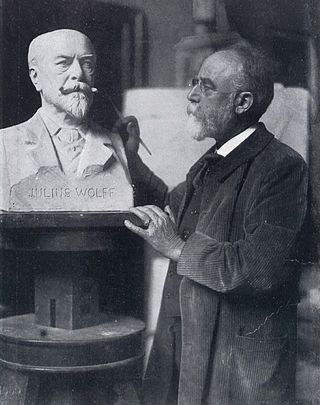
Fritz (Friedrich) Schaper was a German sculptor.

Gustav Heinrich Eberlein was a German sculptor, painter and writer.

The Richard Wagner Monument is a memorial sculpture of Richard Wagner by Gustav Eberlein, located in Tiergarten in Berlin, Germany. It was created during 1901–1903 and is installed along Tiergartenstraße across from the Indian Embassy. It depicts Wagner in a seated pose and is covered by a roof.

The Beethoven–Haydn–Mozart Memorial is an outdoor memorial of 1904 to the classical composers Ludwig van Beethoven, Joseph Haydn and Wolfgang Amadeus Mozart, designed by Rudolf and Wolfgang Siemering and located in Tiergarten, Berlin, Germany. The monument was commissioned by Kaiser Wilhelm II. It suffered considerable damage during World War II and was only fully restored in 2005–2007.
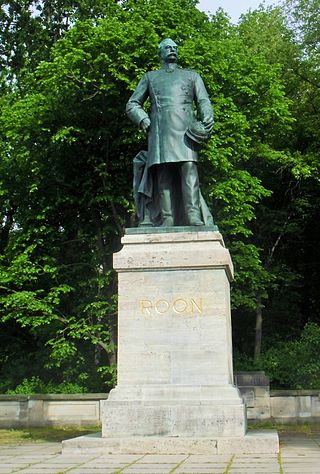
The statue of Albrecht von Roon is an outdoor 1904 monument to Albrecht von Roon by Harro Magnusson, installed in Tiergarten in Berlin, Germany.
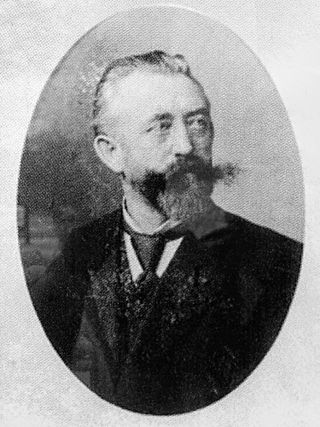
Hermann Geitner was a German garden planner and a prominent director of the Royal Garden in Berlin.



















